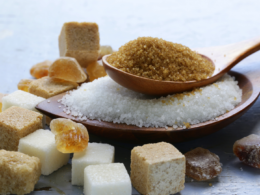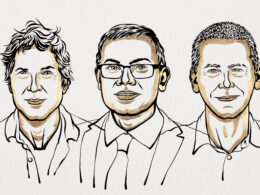Lithium-sulfur (Li-S) batteries have long been touted as the future of battery technology, primarily due to their increased energy density compared to standard lithium-ion (Li-ion) battery, with Li-S standing at 550 Wh/kg (watt-hours per kilogram) compared to Li-ion’s 150-260 Wh/kg. This, paired with Li-S’s relatively light weight (Li-S has about the same density as water), makes it a prime candidate for future battery applications. (Similar cutting-edge innovations for batteries have been covered on this site before, such as the chlorine-based rechargeable battery from the research team at Stanford University.)
See, when electrons travel through the circuit as a Li-based battery discharges, a counterpart positive Li ion travels through from the negative Li electrode to “intercalate” itself within the positive S cathode, embedding itself within the cathode structure as the sulfur electrode is reduced to lithium sulfide (Li2S). During the reverse process, sulfur-based side products are formed as it traverses the distance back towards the negative Li anode.
Problem is, Li-S batteries quickly deteriorate over time. As Li ions react with the cathode, the electrode itself experiences drastic changes in volume as it accommodates more and more ions, further decreasing its chances of accommodating more ions in the process. Likewise, the opposite lithium anode becomes rapidly contaminated with sulfur compounds, exposing less and less lithium to the discharge reaction.
A team of researchers from Monash University in Melbourne, Australia, sought to address these stability issues in Li-S batteries by using what appears to be a simple solution: the addition of sugar-based compounds.
Inspired by a 1988 geochemistry study that describes how sugars help sulfides resist degradation over time, the research team incorporated a saccharide-based binder into the structure of the sulfur-based cathode. Introducing these sugar-based additives to the cathode precursor caused its microstructure to take a web-like form, which the authors noted as capable of “[rising] to the challenge of stress evolution” within the cathode during discharge. The presence of the sugars “stabilized” the cathode, preventing it from being taken away as side products and contaminating much of the lithium anode instead. Prototypes of the battery were shown to exhibit a charge-discharge life of at least 1,000 cycles—all while carrying far more charge compared to standard Li-ion batteries.
Dr. Mahdokht Shaibani, second author of the paper, added that while their team addressed problems on the cathode side of the battery, “there is still need for further innovation into the protection of the lithium metal anode to enable large-scale uptake of this promising technology — innovations that may be right around the corner.”
Lead author Mainak Majumder, professor from the Department of Mechanical and Aerospace Engineering and Associate Director of the Monash Energy Institute, continued: “In less than a decade, this technology could lead to vehicles including electric buses and trucks that can travel from Melbourne to Sydney without recharging. It could also enable innovation in delivery and agricultural drones where light weight is paramount.”
Energy company Enserv Australia is currently “looking to use the technology to enter the growing market for electric vehicles and electronic devices,” according to Managing Director for Enserv Australia Mark Gustowski. Should plans progress, the company aims to develop the country’s first Li-S batteries for commercial use.
References
- Lavars, N. (2021, September 12). Sugar-doped lithium sulfur battery promises up to 5 times the capacity. New Atlas. Retrieved September 28, 2021, from https://newatlas.com/energy/sugar-doped-lithium-sulfur-battery-capacity/
- Monash University. (2021, September 10). A spoonful of sugar opens a path to longer lasting lithium sulfur batteries. ScienceDaily. Retrieved September 28, 2021, from https://www.sciencedaily.com/releases/2021/09/210910121625.htm
- Huang, Y., Shaibani, M., Gamot, T. D., Wang, M., Jovanović, P., Dilusha Cooray, M. C., Mirshekarloo, M. S., Mulder, R. J., Medhekar, N. V., Hill, M. R., & Majumder, M. (2021). A saccharide-based binder for efficient polysulfide regulations in Li-S batteries. Nature Communications, 12(1), 5375. https://doi.org/10.1038/s41467-021-25612-5











